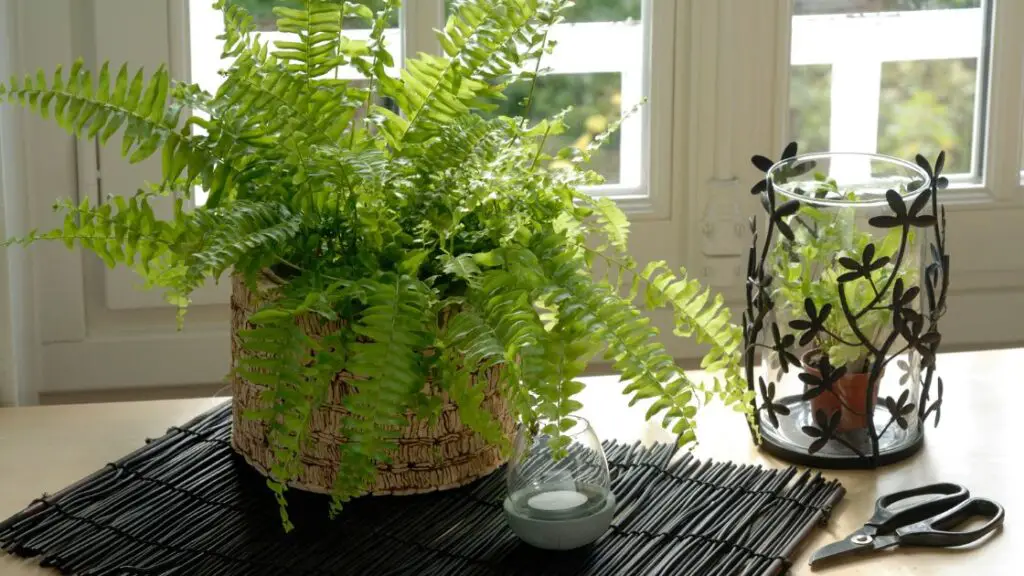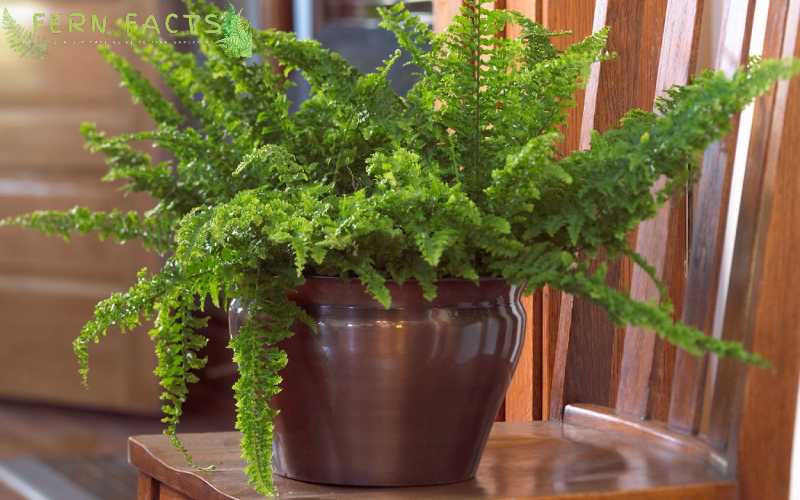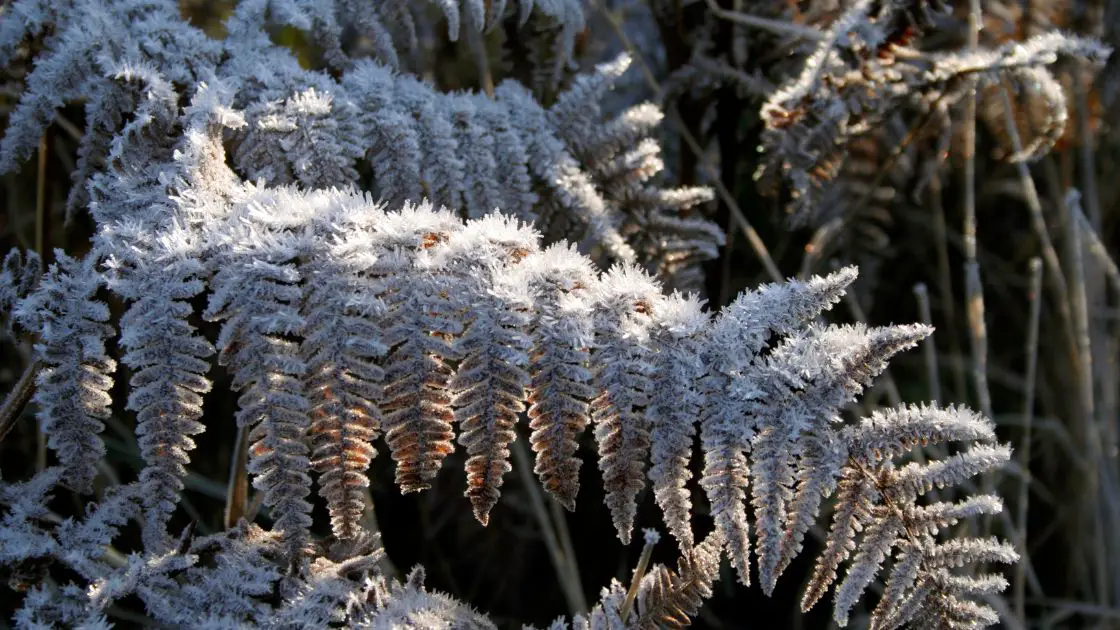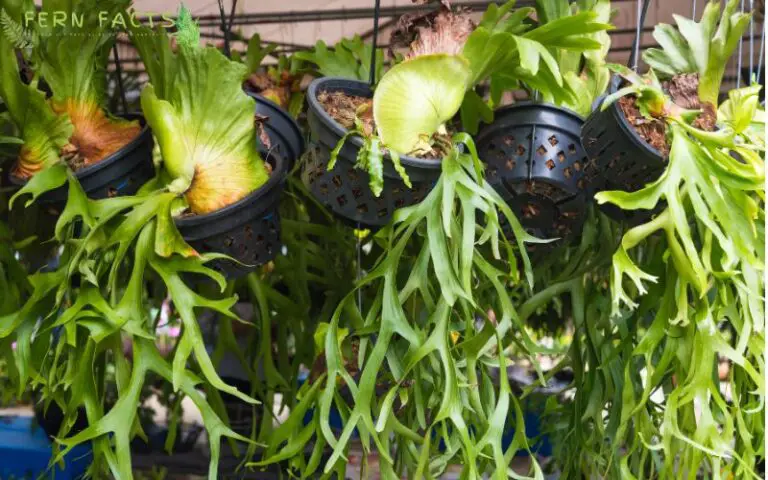How To Keep Ferns Alive Indoors In The Winter: Winter Tips!
To keep ferns alive indoors in the winter, maintain moderate humidity and avoid cold drafts. Ensure they receive bright, indirect light and consistent watering.
Indoor ferns can thrive even as temperatures drop outside, but they require specific care to combat the dry and less illuminated conditions typical of winter.
These lush, shade-loving plants need your attention to remain vibrant and healthy. The right environment is key; a humidifier or a regular misting routine can prevent fronds from drying out.
Regular watering keeps the soil consistently moist, but be cautious not to overwater and cause root rot. Position your ferns where they can bask in indirect light, mimicking their natural habitat under forest canopies.
With these simple care adjustments, your indoor ferns can continue flourishing throughout the winter, adding a touch of greenery and life to your home.

Choosing The Right Ferns
As winter approaches, fern lovers might worry about their green friends. Indoor ferns need special care during the colder months.
The first step is choosing the right ferns. Some ferns handle the indoor climate better than others.
Let’s explore how to select ferns that thrive indoors during winter.
Consider Light Requirements
Ferns love light, but not all the same amount. Some ferns need bright, indirect light, while others prefer low-light conditions.
Here’s a quick guide to help you choose:
- Maidenhair Fern: Prefers bright, indirect light.
- Boston Fern: Can thrive in medium to low light.
- Staghorn Fern: Needs bright light but not direct sunlight.
Place your fern in a spot that matches its light needs. This will keep it healthy and happy.
Selecting The Right Size
Space is key for indoor ferns. Choose a fern that fits your space so it can grow well. Consider the size of the fern when it’s fully grown.
Here’s what to keep in mind:
| Fern Type | Size (Width x Height) |
|---|---|
| Bird’s Nest Fern | 1-2 feet x 1-2 feet |
| Kangaroo Paw Fern | 2-3 feet x 2-3 feet |
| Kimberly Queen Fern | 3 feet x 3 feet |
Measure your space before buying a fern. This ensures it won’t outgrow its home.
Creating The Ideal Indoor Environment For Fern

When winter strikes, fern lovers often worry about their green friends.
Creating the ideal indoor environment for ferns isn’t hard. With the right steps, these lush plants can thrive indoors, even when cold outside.
Let’s explore how to make your home a fern paradise during winter.
Maintaining Proper Humidity Levels
Ferns love moisture. In the dry winter air, they might struggle. Keep humidity high for happy ferns. Here are tips to do just that:
- Mist your ferns with water regularly.
- Use a humidifier near your plants.
- Place a water tray near your ferns to add moisture to the air.
- Group plants together to create a microclimate with higher humidity.
Regulating Temperature
Ferns don’t enjoy the cold. Keep them warm, but not too hot.
Target for these conditions:
| Time of Day | Ideal Temperature |
|---|---|
| Day | 65-75°F (18-24°C) |
| Night | Above 50°F (10°C) |
Keep ferns away from drafts and heaters. Steady temperatures help ferns stay healthy. Place them in a room that doesn’t fluctuate too much in temperature.
Watering And Feeding Your Fern During Winter

Keeping your ferns thriving indoors can be challenging as winter wraps its chilly fingers around us.
The key to success lies in understanding how to water and feed your ferns properly during the colder months. With the right approach, you can keep your ferns lush and healthy all winter.
Let’s delve into the specifics of watering frequency and choosing the right fertilizer for your indoor ferns.
Watering Frequency
Ferns love moisture, but overwatering can be as harmful as under-watering. During winter, your indoor ferns require less water than in the summer.
It’s vital to check the topsoil before reaching for the watering can. If the top inch of soil feels dry, it’s time to water. Aim to keep the soil consistently moist but not soggy.
A good rule of thumb is to water your ferns once a week, adjusting based on the humidity and temperature of your home.
- Check topsoil once a week
- Water when the top inch is dry
- Avoid soggy soil
- Adjust based on home conditions
Choosing The Right Fertilizer
Ferns require nutrients to stay healthy, especially when growing indoors. In winter, their growth slows down, so they need less fertilizer.
Opt for a balanced, liquid fertilizer diluted to half the strength recommended on the package. Fertilize your ferns every other month during the winter to avoid overfeeding, which can lead to brown leaves and weak growth.
| Fertilizer Type | Frequency | Dilution |
|---|---|---|
| Balanced, liquid | Every other month | Half strength |
Remember, your ferns rest in winter, so gentle care is key. With these tips, your green companions will stay vibrant and healthy, ready to burst into full glory when spring arrives.
Pruning And Grooming
As winter’s chill surrounds your home, indoor ferns need extra care. Pruning and grooming become vital for their survival.
These steps keep your ferns healthy and attractive. Here’s how to do it right:
Removing Dead Fronds
Dead fronds can sap energy from your ferns. Remove them promptly to allow for new growth. Use clean, sharp scissors or pruning shears.
Cut close to the base without damaging healthy fronds. This also improves air circulation. Regular removal of dead material prevents disease.
Grooming For Health
Grooming is not just about looks. It’s about keeping your ferns strong. Dust collects on fronds over time. This blocks light and hinders photosynthesis.
Gently wipe the fronds with a damp cloth. Never use Leaf Shine products.
They can clog the pores of fern leaves. Trim any brown tips to keep the fronds looking fresh. Always handle ferns with care as their fronds are delicate.
Pest Control And Disease Prevention
Keeping indoor ferns healthy in winter needs good pest control. Let’s look at how to keep bugs away and stop diseases.
Identifying Common Pests
Ferns can attract several pests. Here are the most common:
- Spider Mites: These tiny bugs cause yellow dots and webbing on leaves.
- Mealybugs: Look for white, cottony masses in leaf joints.
- Scale: Hard or soft bumps on stems or leaves mean scale insects.
To see these pests, use a magnifying glass. Early detection is key to control.
Preventative Measures
To protect your ferns from pests and diseases, follow these steps:
- Keep them clean: Dust leaves often. This stops pests from settling.
- Humidity: Ferns love moisture. Use a humidifier or mist them regularly.
- Inspect new plants: Check new ferns before bringing them inside. This stops pest spread.
Regular care keeps your ferns strong and less likely to get sick. Remember, healthy plants fight off pests better!
:strip_icc()/Fern-care-guide_color-60ca55468186415a807947f79415aa6a.jpg)
Credit: www.bhg.com
Monitoring And Adjusting
Keeping ferns vibrant and healthy during winter requires keen observation and timely adjustments. Ferns, with their lush green fronds, can thrive indoors even when temperatures drop outside.
The key to success lies in monitoring their environment and responding to the subtle signs they give.
Let’s dive into how regular inspections and necessary changes can keep your ferns flourishing all winter.
Regular Inspection
Inspecting your ferns regularly is crucial. Look for yellowing leaves, dry soil, and wilting fronds. These signs can tell you a lot about the health of your plant.
Check the moisture level of the soil by feeling it with your fingers. The soil should be damp, not soggy or bone dry. Observe the color and texture of the fronds.
Healthy ferns boast vibrant green and supple fronds. Make note of any pests or brown spots that could indicate disease.
- Check soil moisture weekly
- Examine frond color and texture
- Look for signs of pests or disease
Making Necessary Changes
After inspection, you might need to make changes to ensure your fern’s survival. If the soil is dry, water your fern until it runs from the drainage holes. But don’t let the pot sit in the water.
If the air in your home is dry, consider using a humidifier or misting your ferns to increase humidity. Too much direct sunlight can harm ferns in the winter.
Move your fern to an area with indirect light if needed. Prune any dead or yellowing fronds to encourage new growth.
| Action | Reason | Frequency |
|---|---|---|
| Watering | Dry soil | As needed |
| Misting | Low humidity | Daily |
| Relocating | Excess light or heat | As needed |
| Pruning | Dead or yellow fronds | As needed |
By following these steps, your indoor ferns will remain a source of natural beauty throughout the winter months.
Stay attentive and responsive to your plants’ needs, and they will continue to thrive under your care.
Winter Dormancy Period
As winter approaches, gardeners often worry about their lush green ferns. Understanding the winter dormancy period is crucial for keeping indoor ferns thriving during the colder months.
Let’s dive into how to ensure your ferns survive and flourish indoors when the temperatures drop.
Understanding Ferns’ Resting Phase
Ferns, like many plants, enter a resting phase during winter. This phase is a natural cycle where growth slows down. Ferns use less energy and require different care.
It’s a time for them to conserve resources until spring arrives.
Care During Dormancy
Providing the right care for your ferns during dormancy is key to their survival. Here are the essential steps:
- Reduce watering since ferns need less moisture in winter.
- Avoid fertilizing as growth is minimal and nutrients are not required.
- Maintain humidity with a humidifier or pebble tray to prevent dry air from harming the ferns.
- Keep them in indirect light, as too much direct sunlight can be harsh on dormant ferns.
- Watch for pests that can take advantage of weakened plants.
- Prune dead fronds to help the plant focus its energy on survival.
By following these steps, your ferns will rest well during winter and be ready to grow when warmer weather returns.
Reviving Unhealthy Ferns
If your indoor ferns look sad during winter, don’t worry!
Here’s how you can bring them back to life. Although keeping ferns thriving indoors in cold seasons can be challenging, with the right approach, you can revive even the most unhealthy ferns.
Diagnosing Issues
First, identify what’s wrong with your fern. Here are common problems:
- Brown fronds might suggest dry air or under-watering.
- Yellowing leaves can indicate over-watering or poor drainage.
- Spots on leaves often mean fungal infections.
Check the soil moisture with your finger. If it’s dry, your fern needs more water. If it’s soggy, you might be watering it too much. Look at your fern’s spot in the room.
Too much direct light or not enough light can stress your fern.
Implementing Remedies
Now, let’s fix the issues. Here’s what you can do:
- Adjust watering habits: Water only when the top inch of soil is dry.
- Improve humidity: Mist your ferns regularly or use a humidifier.
- Optimize light: Place your fern in bright, indirect light.
- Treat infections: Use a fungicide for any fungal issues.
Remember to trim any dead or damaged fronds. This helps your fern focus on growing healthy leaves. Changing the pot and soil every few years can also boost your fern’s health.
With these steps, your indoor ferns should flourish, even in winter!
Frequently Asked Questions
Can Ferns Survive Winter Indoors?
Yes, ferns can survive winter indoors if kept in a cool place with high humidity and indirect light. Regular watering is essential for their health during the colder months.
How To Keep Potted Ferns Alive?
Place potted ferns in indirect light and maintain a humid environment. Water them when the topsoil feels dry and ensure proper drainage.
Feed with diluted fertilizer during the growing season. Trim dead fronds to promote new growth. Keep away from drafts and extreme temperatures.
Will Potted Ferns Come Back After Winter?
Potted ferns can survive winter indoors and often rebound with proper care. Ensure they receive enough light and moisture during colder months.
How To Bring A Fern Back To Life Indoors?
Trim dead fronds from the fern. Ensure it’s in indirect light. Water it regularly, keeping the soil moist. Provide humidity with a tray of water or misting. Fertilize monthly during growing seasons.
Conclusion
Keeping your indoor ferns thriving through winter doesn’t have to be challenging. Your ferns can flourish with proper light, humidity, and temperature control.
Remember, regular misting and avoiding direct heat sources are key. Embrace these tips, and watch your ferns stay lush and green, even as the temperatures drop outside.
Happy gardening!







